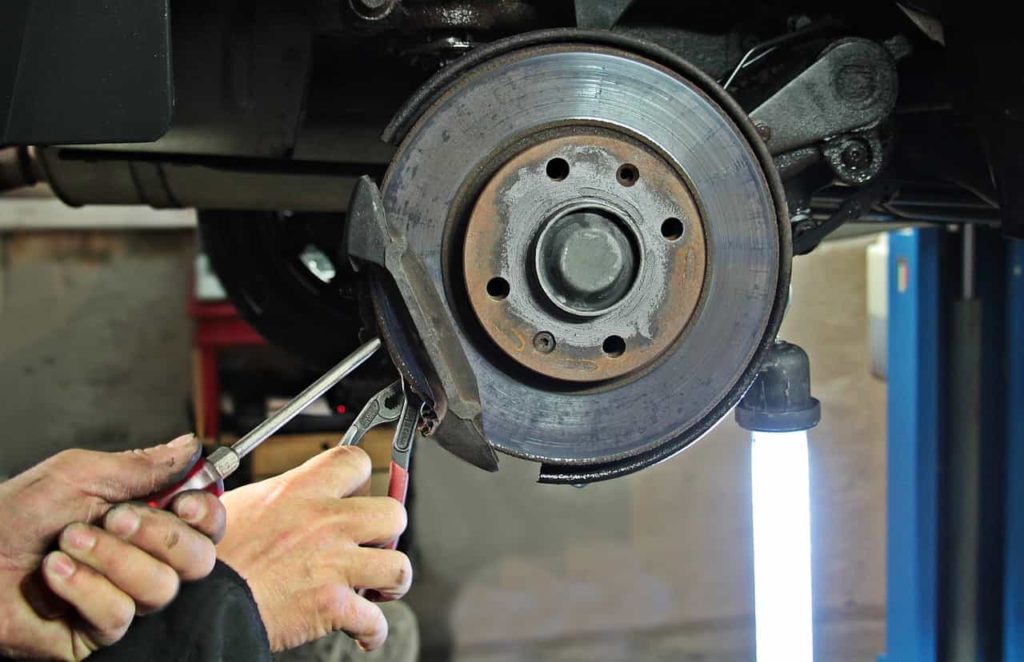Introduction
Steering through the labyrinth of modern roads demands not only skill but also the subtle art of controlling a high-speed metal beast. Central to this mastery is the Anti-lock Braking System (ABS), a life-saving technology that sits at the heart of our vehicles quietly shaping our journeys with its advanced machinery. This intricate mechanism comprising wheel speed sensors, hydraulic control units, electronic control units, and brake pedal position sensors, operates beneath the surface like an unsung hero. Its singular mission? To provide you, the driver, with unparalleled control even in the most challenging situations. Let’s pull back the curtain on ABS unearthing the complexities of this essential safety feature, its components, how it works, its advantages, and how it contributes to a safer, smoother driving experience. Buckle up and brace yourself for an in-depth exploration of this automotive marvel! ABS technology has revolutionized automotive safety in modern vehicles, and it’s worth learning how it works.
Explanation of ABS System
ABS systems work by detecting when one or more wheels are about to lock up while braking. If this happens, the ABS system reduces the brake pressure to that wheel until it starts spinning again.
This process of reducing and increasing brake pressure happens very quickly, providing stable stopping power while preventing skidding. The ABS system comprises several components working together to detect wheel locking and release brake pressure momentarily.
These components include wheel speed sensors, hydraulic control unit (HCU), electronic control unit (ECU), and brake pedal position sensor. The wheel speed sensors detect when a wheel is about to stop rotating; once the ECU receives this information from all four-wheel speed sensors simultaneously, it determines whether any one of them is slowing down too fast compared to others.
Importance of ABS System in Modern Vehicles
The importance of ABS in preventing accidents on modern roads cannot be overstated. Before the invention of ABS, drivers had to rely on their skills when applying brakes in panic situations which could lead to skids.
The introduction of ABS systems has made driving safer by providing an extra layer of safety by ensuring that even under hard braking, drivers have better control over their vehicles. Modern vehicles are designed for high speeds which require efficient braking systems; thus, almost all cars come with an anti-lock braking system as standard equipment.
Insurance companies offer discounts for cars equipped with these systems since they reduce the likelihood or severity of accidents on the road. Additionally, governmental regulations in many countries require all new cars to have ABS systems installed as standard equipment.
ABS System Components
The Anti-lock Braking System (ABS) is a crucial part of modern vehicles. It helps to prevent skidding and loss of control during hard braking.
The system is made up of several components that work together to ensure the safety of drivers and passengers. Here are some of the most important components:
Wheel Speed Sensors
The wheel speed sensors are located at each wheel and detect the speed of rotation. They consist of a toothed ring, which rotates with the wheel, and a sensor that detects these teeth as they pass by.
The frequency at which these teeth pass indicates how fast the wheel is rotating. As the name implies, these sensors detect the speed at which each wheel is turning.
If one or more wheels are turning slower than others during braking, this can trigger an ABS activation event. This component plays a crucial role in ensuring optimum braking performance on all four wheels.
Hydraulic Control Unit (HCU)
The Hydraulic Control Unit (HCU) is responsible for managing brake fluid flow to each brake caliper or drum cylinder when ABS activation occurs. It consists of several valves and solenoids that can modulate brake fluid pressure independently on each wheel circuit.
If a given wheel’s speed sensor detects an abnormality in rotation rates while stopping, it sends this information to the Electronic Control Unit (ECU). The ECU then sends instructions to the HCU module about controlling pressure inside brake lines according to specific algorithms based on vehicle speed, deceleration rate etc.
Electronic Control Unit (ECU)
The Electronic Control Unit (ECU) is like “the brain” behind an ABS system; it processes data from various inputs like wheel speed sensors, HCU solenoids, brake pedal position sensor etc. and decides when to activate the ABS system. It is a microprocessor-based computer that continuously monitors the brake system for any abnormalities that could lead to potential hazard or malfunction.
When it receives input from a wheel speed sensor, it can quickly determine if one wheel is turning slower than the others during braking. This information is crucial in telling the HCU which wheels to reduce braking pressure on and by how much.
Brake Pedal Position Sensor
The Brake Pedal Position Sensor is located at the brake pedal’s base and sends signals to the ECU regarding how hard or soft you’re pressing your brake pedal down. Based on these inputs, the ECU can quickly adjust braking force application on each wheel circuit.
This sensor helps determine if there is a need for ABS activation because if you suddenly mash down on your brakes with excessive force, then you may risk locking up your wheels and losing control of your vehicle. The brake pedal position sensor data helps prevent this from happening by giving the ECU valuable information about how much force you’re applying on your brakes at any given time.
The components of an ABS system work together seamlessly to provide drivers with superior control while braking. The Wheel Speed Sensors detect which wheels are rotating slower than others during deceleration events. The Hydraulic Control Unit valves moderate pressure while discarding fluid as needed according to instructions sent by Electronic Control Unit algorithms which process all inputs before deciding when is the best time to activate the ABS system for maximum safety.
How ABS Systems Work
The Anti-lock Braking System (ABS) is a safety feature that prevents wheels from locking up during sudden braking, which can cause skidding and loss of control. The ABS system works by continuously monitoring the speed of each wheel and reducing brake pressure to any wheel that is slowing down faster than others. With the help of the ECU and hydraulic components, the ABS system helps drivers maintain vehicle stability and steer around obstacles during emergency situations.
Step 1: Monitoring Wheel Speeds
The first step in the ABS system’s operation is to monitor the speed of each wheel using wheel speed sensors. These sensors are located at each wheel’s hub or inside its brake rotor.
As each wheel rotates it sends signals to the Electronic Control Unit (ECU) about its speed and acceleration. The ECU then compares these speeds to determine if any wheel is slowing down faster than others.
If one or more wheels are decelerating too quickly, it indicates that they may be about to lock up. In this case, the ECU moves on to step two.
Step 2: Activating the HCU
If one or more wheels are decelerating too quickly in comparison with the other wheels, then this indicates potential wheel lock up and skidding danger for your car. To prevent such an issue an Electronic Control Unit (ECU) activates a Hydraulic Control Unit (HCU).
The HCU reduces brake pressure for that specific wheel so it can keep rotating but at a reduced speed. Reducing brake pressure ensures that all four wheels maintain traction on slippery roads by preventing them from locking up suddenly due to excessive heat build-up caused by friction between tire rubber and road pavement surfaces.
Step 3: Preventing Skidding
The third step of the ABS system is to prevent skidding by reducing brake pressure to the specific wheel that is about to lock up. By reducing brake pressure, the ABS prevents the wheel from completely stopping and sliding. This allows the driver to maintain control of the vehicle and steer around obstacles during emergency situations.
ABS system technology has drastically improved vehicle safety in recent years. It has reduced braking distances and helped drivers maintain control during emergencies.
When an ABS-equipped vehicle comes to a stop, it will not leave skid marks on the road surface because all wheels have rotated continuously together throughout braking. The ABS system also works well with other advanced safety features like electronic stability control and traction control systems, which help prevent accidents caused by oversteering or understeering in wet or slippery conditions. ABS systems are also utilized by indirect tire pressure monitoring systems in detecting low tire pressure.
Advatages of ABS System
Improved Braking Distance
The ABS system can dramatically reduce the braking distance in emergency situations, making it one of the most important safety features in modern vehicles. When a driver slams on the brakes the wheels lock up and skid, reducing the amount of traction between the tires and road surface which leads to a longer stopping distance. However, when an ABS system is present it prevents wheel lock-up by pulsing the brakes to keep them from sliding.
This allows for more efficient use of the tire contact patch and reduces skid marks on the road surface. The result is a shorter stopping distance and improved control over the vehicle.
The Importance of Reducing Skidding
The main advantage of an ABS system is that it prevents skidding while braking. Skidding occurs when wheels lock up during panic stops or hard braking and can lead to complete loss of control over steering which can result in an accident.
The ABS system works by preventing this situation from happening by altering pressure and rotation speed resulting in better stability for both vehicle and driver during panic stops or hard braking. If you ever find yourself in this situation, having an ABS system gives you confidence and peace-of-mind that you won’t lose control.
Conclusion
As we navigate the highways of life, our vehicles serve as both our chariot and our fortress. Integral to this safety is the Anti-lock Braking System (ABS), a marvel of modern technology that has reshaped our relationship with speed, control, and emergency. This complex interplay of wheel speed sensors, hydraulic control units, electronic control units, and brake pedal position sensors ensures each journey is a safer one. It’s a testament to human ingenuity, translating potential chaos into a symphony of safety. Every vehicle is a speeding capsule of momentum and physics; with ABS, we find harmony between the desire for speed and the imperative of safety. Remember, ABS is not just a system—it’s your invisible guardian working tirelessly beneath your feet to keep you safe on every journey.



